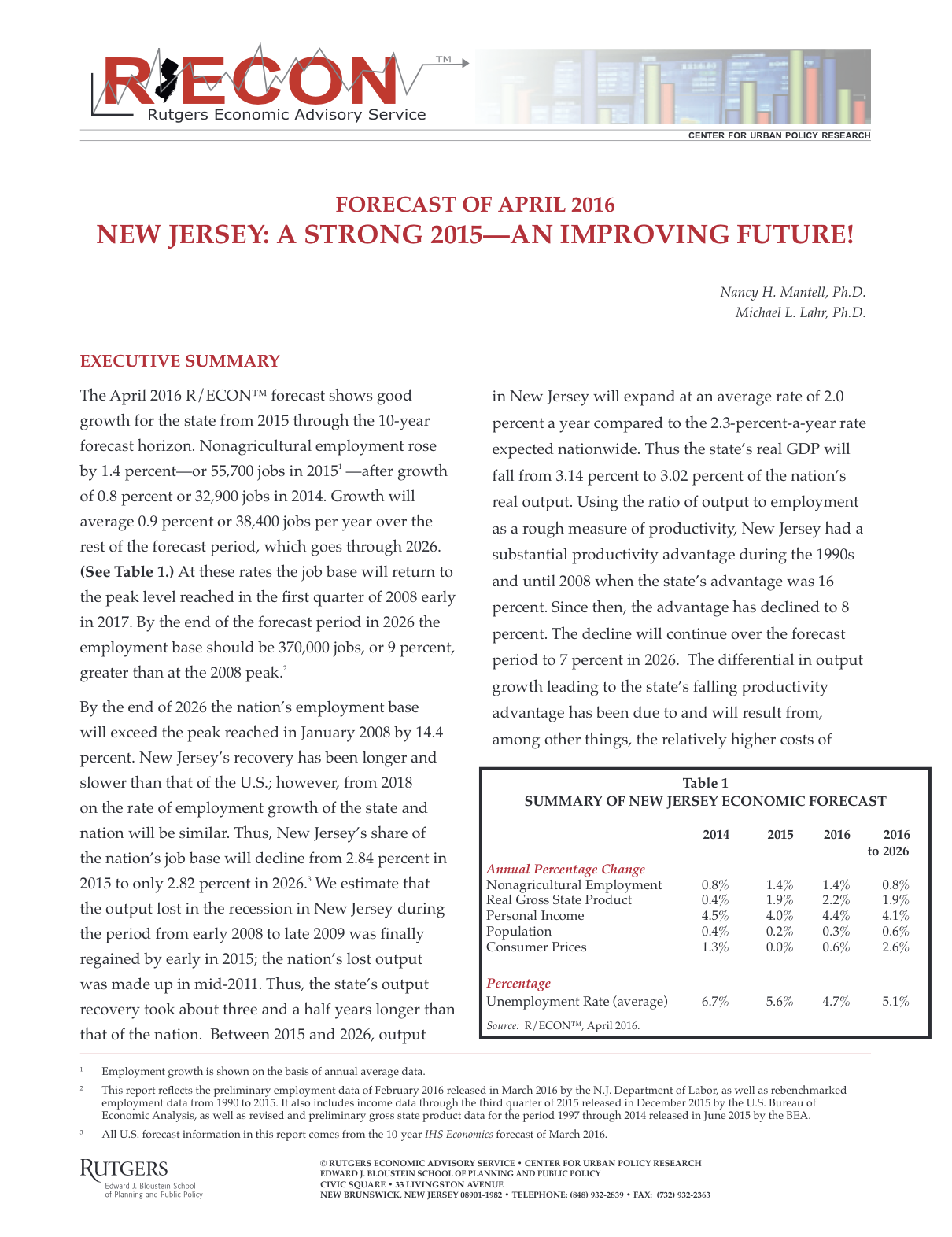The April 2016 R/ECON™ forecast shows good growth for the state from 2015 through the 10-year forecast horizon. Nonagricultural employment rose by 1.4 percent—or 55,700 jobs in 20151 —after growth of 0.8 percent or 32,900 jobs in 2014. Growth will average 0.9 percent or 38,400 jobs per year over the rest of the forecast period, which goes through 2026. At these rates the job base will return to the peak level reached in the first quarter of 2008 early in 2017.
By the end of the forecast period in 2026 the employment base should be 370,000 jobs, or 9 percent, greater than at the 2008 peak. 2 By the end of 2026 the nation’s employment base will exceed the peak reached in January 2008 by 14.4 percent. New Jersey’s recovery has been longer and slower than that of the U.S.; however, from 2018 on the rate of employment growth of the state and nation will be similar. Thus, New Jersey’s share of the nation’s job base will decline from 2.84 percent in 2015 to only 2.82 percent in 2026. 3 We estimate that the output lost in the recession in New Jersey during the period from early 2008 to late 2009 was finally regained by early in 2015; the nation’s lost output was made up in mid-2011. Thus, the state’s output recovery took about three and a half years longer than that of the nation. Between 2015 and 2026, outputin New Jersey will expand at an average rate of 2.0 percent a year compared to the 2.3-percent-a-year rate expected nationwide. Thus the state’s real GDP will fall from 3.14 percent to 3.02 percent of the nation’s real output. Using the ratio of output to employment as a rough measure of productivity, New Jersey had a substantial productivity advantage during the 1990s and until 2008 when the state’s advantage was 16 percent. Since then, the advantage has declined to 8 percent. The decline will continue over the forecast period to 7 percent in 2026.
